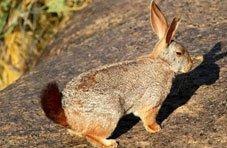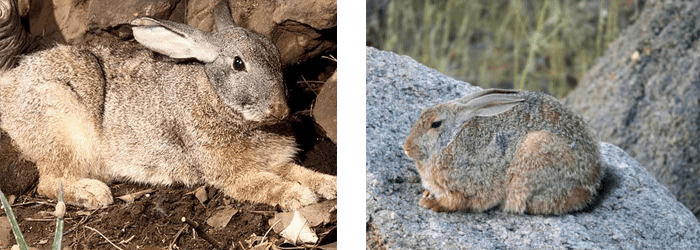Enjoy your time at Springbok Casino
South African Bunnies: Red Rock Hare

If you see big balls of fur with fluffy tails hopping among the rocks and boulders, you’re probably in the company of a Red Rock Hare. Reddish brown in colour, with thick and wooly coat and bushy tail, it belongs to one of species variations which are very similar to each other. Smith's Red Rock Hare is the smallest of them, populating hills in the Free State, southern KwaZulu-Natal, Eastern and Western Cape. Jameson’s Red Rock Hares occur in the north-east of South Africa, while Hewitt's Red Rock Hare is a widely distributed species found in the southern and eastern regions of South Africa, as well as Lesotho and western Swaziland. Natal Red Rock Hare appears to be endemic to the Eastern Cape Province, Natal, eastern Lesotho, Swaziland and southern Mozambique.
As their name would indicate, these little bunnies love rocky environments and avoid open expanses of plain. During the daytime, they’ll be resting in patches of thick vegetation and rocky shelters, sun themselves on boulders in the early mornings and move out to feed at sundown. Their diet includes vegetation such as grasses and leaves, certain fruits and insects found in and around their habitat. These little mammals are solitary in habits, and while you’ll be able to spot a female and her young hanging out together, or courting mates following the ladies when in heat, Red Rock Hare will move around on its own most of the time.

Females can produce up to 4 litters per year, each time giving birth to one or two young. The offspring is born precocial, meaning that unlike bold and blind rabbit newborns, baby hares come into this world already furry and with open eyes. This makes them capable of taking care of themselves quite early on, so mums will keep them in fur-lined nests only for a few days, feeding them milk every 24 hours.
While Red Rock Hares talk to each other by drumming of their feet, they also strongly rely on scent as means of communication. High pitched squeals are produced when captured by predators such as leopards, jackals, large snakes, Cape eagle owls and black eagles. And as is often the case, also humans who catch them for food. Since the small balls of fur can hardly take such enemies heads on, the hare will mainly rely on its well-developed running ability to escape. It has been reported that it can achieve speed of up to 80 km/h, which is pretty impressive, and run up some very steep slopes. Camouflage and taking shelter in crevices and hollows between the rocks is a good way to disappear from the predator’s sight.
Thanks to its wide distribution and large population, Red Rock Hare is not listed as endangered nor threatened. Still, these rare and lovely animals are quite vulnerable due to a large number of significantly stronger predators and, as is often the case with many other animals, its natural habitat being invaded by humans. Even if they’re not facing extinction at this moment in time, seeing these shy and cute creatures, you’ll surely agree we should put in effort to protect them better and appreciate more.



